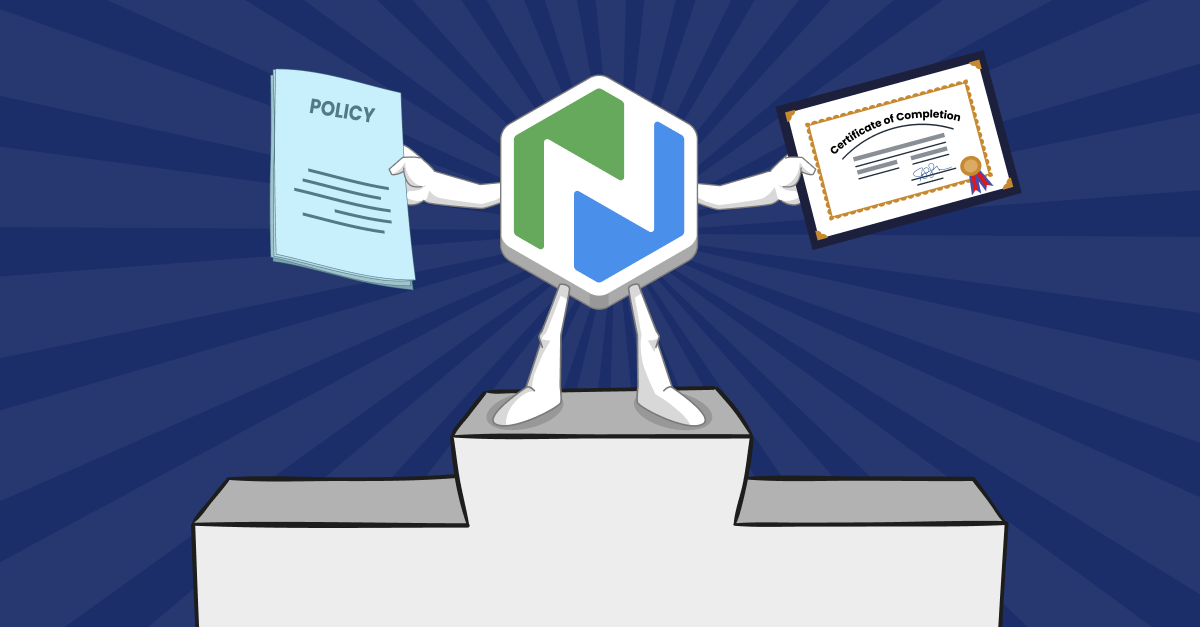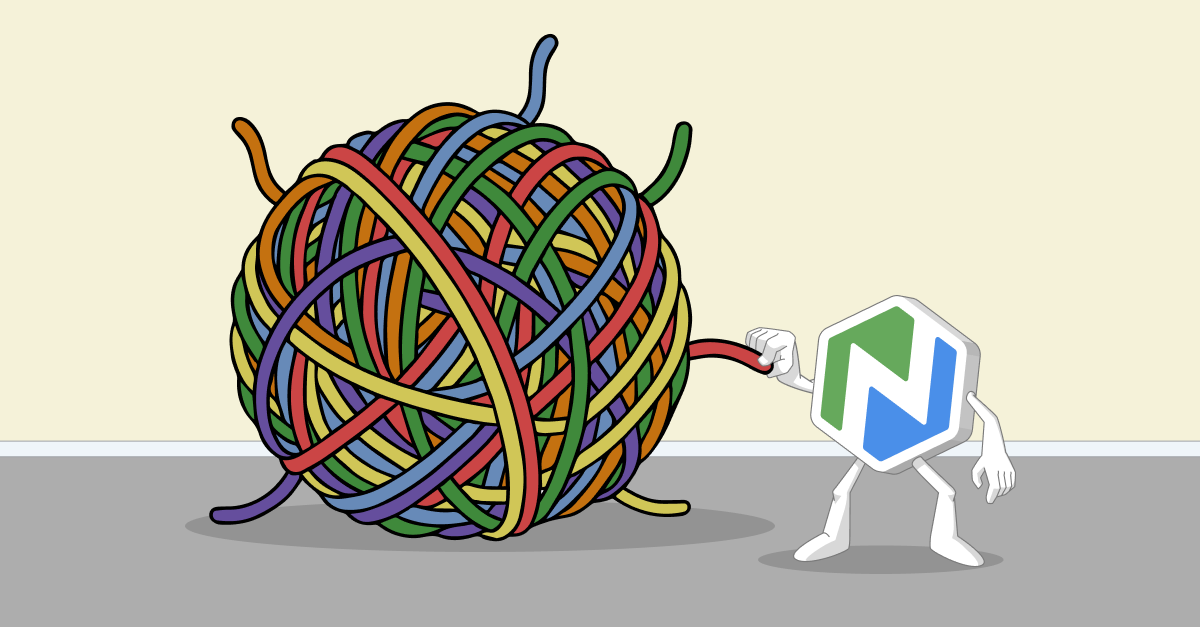How to Save Institutional Knowledge Before It's Forgotten
Learn ways to preserve critical know-how, workflows, and team insights before they disappear—while building a culture of learning.
.png)
About six months after I left a former job, a coworker emailed me asking if I had a copy of my job description. Some tasks had fallen through the cracks when I left, and they were trying to get things back on track.
I didn’t have a copy of the job description, so I couldn’t help much. I felt bad, but also a little frustrated. For various reasons, I had expected something like this to happen and had suggested some interventions to ensure a smooth transition between me and whoever took the job next. Those interventions never happened, creating extra work for the colleague who tracked me down.
Sound familiar? Maybe you’ve been the person tracked down after you left a job with the question, “What did you actually do, again?” Or maybe you’ve been the person who has to pick up the slack when someone leaves, trying to figure out where things are and how they worked.
When someone leaves a job, it’s not just the person who goes. It’s their knowledge. Networks, connections, and workflows can all fall apart when someone walks out the door. Instead of a short pause between people, there’s the risk of organizational backsliding as people struggle to figure out what was lost, how to get it back, and if they even can. And while some processes can naturally be let go of in favor of new ways of doing things, the loss of institutional knowledge can sometimes leave coworkers and teams confused, scrambling, or stuck.
It doesn’t have to be this way. Careful management can mitigate the loss of institutional knowledge, reduce stress, and ensure continuity when people leave. Let’s look at how.
What is Institutional Knowledge?
Institutional knowledge can be defined as “a shared set of facts, concepts, connections, technical ‘know-how’, and data that is held by a group of people working together.” The California Learning Resource Network says it’s the “collective experience, expertise, and knowledge gained by an organization over time…the accumulated wisdom, best practices, and lessons learned by employees, teams, and departments within an organization.” All of this wisdom helps organizations “make informed decisions, improve performance, and maintain continuity.”
Institutional knowledge is stored in lots of explicit or tangible ways, including documents, databases, records like meeting minutes, and policies. According to Lillian Gassie, explicit knowledge is written and stored, which means it can be easily shared with others. It’s used to promote consistency in how an organization operates. Wendy McClellan points out that it’s fairly easy to retain explicit knowledge by documenting and making accessible processes and procedures.
But institutional knowledge is also stored in lots of implicit or intangible ways, like company culture, behavioral norms, unwritten traditions, and individual networks and relationships. Gassie notes that implicit knowledge can be highly personal, intuitive, and subjective. It includes things like hands-on skills and experience, which makes it harder to communicate. It’s most often shared through experiences and interpersonal interactions. McClellan concurs, noting that “employees pass along this intangible wisdom informally, often by word-of-mouth. If best practices exist only in the employees’ minds or scattered on sticky notes, the chain of knowledge is irretrievably broken when they leave.”
The Costs of Losing Institutional Knowledge
Massoma Memom notes that institutional knowledge helps with productivity, efficiency, and accessibility. Employee satisfaction and performance go up, and everyone is more productive.
There are high costs associated with the loss of institutional knowledge. Beth Maser puts it succinctly: when “individuals leave—no matter the circumstances—their institutional knowledge goes with them…losing this information doesn’t just disrupt daily operations, it weakens an entity’s competitive edge and erodes the ability to adapt to future challenges based on lessons learned.”
There’s the obvious cost of losing institutional knowledge, which is simply…the loss of knowledge. But there are other costs as well, as efficiency slows down, relationships are lost, and systems and workflows need to be rebuilt. Let’s look at three of them.
- Productivity. Sid Probstein cites a study that “found that knowledge workers still spend 19% of their time searching for and gathering information.” John Corrigan points to a more recent study showing that “employees spend, on average, at least two hours a day…looking for the documents, information, or people they need to do their jobs.” All that time looking for information just so you can do your work keeps you from actually doing your work!
- Motivation. Even if you start excited to do a task or solve a problem, waiting for the necessary information to complete the work can sap your energy. Instead of being able to find information themselves, otherwise motivated employees play a waiting game. Corrigan writes, “43% would consider leaving a job if there wasn’t an efficient or easy way to access [information]. This expectation increases amongst Gen Z.”
- Stress. Dan Mallin points out that stress isn’t limited to the people searching for information. “When knowledge is not readily accessible, professionals are going to [reach] out over email or Slack to costly subject matter experts.” He adds that “the constant disruption from the same questions takes these experts away from other more valuable work [and can] cause retention problems” for experts who want to do more than answer questions all day.
Two Major Challenges to Preserving Institutional Knowledge
It’s obvious why preserving institutional knowledge matters. But it doesn’t come without challenges. Let’s look at two common ones.
- Institutional knowledge can be hard to capture. The California Learning Resource Center points out that “institutional knowledge is often informal and intangible, making it difficult to capture and document.” Memon agrees, noting that institutional knowledge is really the “collective knowledge of a company’s employees, including information on workflows, processes, best practices learned over years of projects.” We often express this collective knowledge in our day-to-day work and relationships, rather than in policies and handbooks. Most employees are thinking about what they’re doing, not how to capture and document what they’re doing. And organizations may simply not have a process for capturing this knowledge, even if employees wanted to.
- Institutional knowledge can be hard to keep up-to-date. If you manage to capture institutional knowledge, you still have to ensure it is accurate, relevant, and current. Otherwise, you have an archive, and not a very useful one at that. As Mallin points out, “Whether people are promoted, change departments, or resign, all of their knowledge goes with them. So even though the documents they worked on remain behind, the data goes dark.” Unless a system allows you to both capture information and easily keep it up-to-date, you’re creating a repository for old policies and meeting minutes, not a useful knowledge bank.
How to Protect Institutional Knowledge
You don’t have to let challenges stop you, though! Here are some tips your organization can implement to capture and use institutional knowledge.
1. Decide what you want to protect
An archivist once told me that the key to creating a great archive is not collecting everything. The same is true here. Capturing institutional knowledge doesn’t mean creating an information dump that’s impossible to sift through. Instead, focus on the most important decisions and processes. What information and knowledge do you absolutely have to keep to maintain continuity and cohesion? And while you may think executives and leaders should make these decisions, don’t forget your front-line staff and volunteers. They have their own set of skills and knowledge, so be sure to work as a team to identify what needs to be protected.
2. Decide how you’re going to capture, keep, and organize knowledge
Once you know what you want to protect, you need to figure out how. You can capture information in many ways—documents, spreadsheets, policies, oral histories, agendas and minutes, training resources, and more. Once you start capturing information, store it in a central location that everyone has access to, so you avoid the problem of people not knowing where to look for what they need. Take the time to add tags, categories, pathways, or keywords so information is searchable. As I know from working in libraries, if you have information but can’t actually find it, you may as well not have it at all!
3. Let staff create training
If someone holds implicit knowledge, let them document and pass it on! Trust staff to record decisions, provide resources, document processes, and create training for their colleagues and successors. If you’re concerned staff are too busy or unwilling to share knowledge, Laura Reul recommends incentivizing the process by “tying knowledge transfer to performance expectations or by giving prizes to those who practice it.”
4. Encourage creativity
McClellan cites research stating that “75% of employees would rather watch a video than read an email or manual.” And we’ve written about how this is even more true for Gen Z employees, who will make up 30% of the workforce by 2030. So be creative in how you capture knowledge. Videos are especially great for capturing processes, like “how to handle a customer call” or “how to update the volunteer database.” Look for learning platforms that support video and enhance it with text, images, voice recordings, and captioning.
5. Create a culture of learning
Memon believes that “as more and more employees get in the habit of documenting their processes, workflows, and work principles, they can trade information to optimize processes,” creating an organic culture of learning and information sharing. A culture of learning boosts resilience and improves communication, both keys to preventing toxic workplaces. So as you’re creating, storing, and sharing institutional knowledge—and then making access and training consistent and continual—you’re not only protecting your organization from sudden information loss. You’re creating a culture of transparency where people are encouraged to build knowledge together.
A Few More Useful Tips
- Build better onboarding. Groundwork USA points out that a good onboarding system helps “to build and transfer institutional knowledge in the workplace and in your teams” right from the start. Onboarding is a natural place to begin transferring institutional knowledge. Engaging people as soon as they start, whether they’re new employees or volunteers, can help set a culture of learning and transparency.
- Provide mentorship and cross-training. Mentorship and cross-training are great ways to transmit implicit knowledge within an organization. Mentors not only help people understand processes and procedures, they also help build networks and relationships that might otherwise be lost when an employee leaves. Plus, they help build a better workplace culture and foster wellbeing for everyone.
- Develop a succession plan. Succession planning is another way to prepare for knowledge loss before it happens. It takes time, but this ongoing process of evaluating your most valuable positions—and the knowledge held in them—is worth it. Mapping out who is in your organization, what they do, what they know, and who they know can help you identify key areas of information that need to be protected and maintained.
Protect Your Institutional Knowledge Today
Protecting institutional knowledge can feel overwhelming, but it doesn’t have to be. Even small steps can help keep your teams running and maintain organizational continuity.
And you don’t have to do it alone. At Niche Academy, we are committed to supporting mission-driven organizations. We’re focused on helping you preserve knowledge and processes so you save time, maintain consistent services, and reduce stress.
We can help your team stay aligned and confident through inevitable changes. If you’re interested in learning how we can help you preserve what matters most, sign up for a free trial. You’ll see firsthand how anyone on your team can document processes and upload them on a shared learning hub, all without specialized technical skills. We’ll help you create a lasting resource for your organization that keeps things centralized, searchable, and ready for use.
Plus, instead of just storing knowledge, we help you create customized training to keep learning constant and consistent. Instead of just capturing information, you’ll create a culture of learning where employees and volunteers thrive.
References
California Learning Resource Network. (December 27, 2024). What is Institutional Knowledge?
Corrigan, J. (February 8, 2022). Employees waste at least 'two hours a day' searching for what they need to work. Human Resource Director.
Gassie, L. (August 18, 2017). Managing Institutional Knowledge. IFLA Pre-Conference Workshop.
Groundwork USA. Best Practices for Building Institutional Knowledge.
Mallin, D. (March 1, 2022). The Cost Of Losing Employee Knowledge: Three Unexpected Challenges Of The Great Resignation. Forbes.
Maser, B. (April 18, 2025). The Cost and Consequence of Institutional Memory Drain. Inc.
McClellan, W. (April 2023). 7 Steps to Secure Institutional Knowledge. Legal Management: The Magazine of the ALA.
Memom, M. (March 13, 2025). 5 Ways to Preserve and Share Institutional Knowledge. Vimeo.
Probstein, S. (December 19, 2017). Reality Check: Still Spending More Time Gathering Instead Of Analyzing. Forbes.
Reul, L. (April 22, 2022). How to Safeguard Institutional Knowledge in the Face of the Great Resignation. Gartner.

.png)
.png)
.png)

.png)
.png)

.png)

.png)
.png)